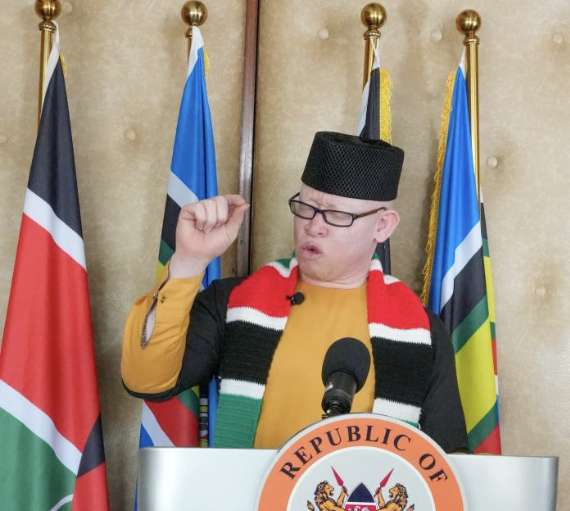
The midterm effect of Kenya’s fifth administration has been defined by three events, namely; the Gen Z protests, the Rigathi impeachment and Raila’s bid to become the African Union Commission chairperson. In midterm, governments are never popular the world over.
Having come from a post Covid-19 era, coupled with the effects of a long electioneering period, the economy was struggling, and needed a rebuild. In fact, the Kenya Kwanza government was elected on a platform for fixing the economy. It should be noted that this is possibly the first time that a government was elected largely on its manifesto, away from simple tribal arithmetic as has been in the past.
The economy was on its doldrums when President Ruto took over. It could have been worst had he not taken bold decisions to deal with the fundamentals.
In 2022, there were little if any foreign reserves. Today, we have more than $9.6 billion in reserves that can cover imports up to six months.
Our shilling is so strong that if left to market forces, it could go down to below 100 to the dollar. Inflation is at an all-time low. The price of basic commodities like cooking oil, sugar, unga, etc has come down significantly, thus lowering the cost of living.
It is also true to say that the government-to-government oil programme has not only stabilised supply, but it has also seen the price at the pump go down or remain within a given range, hence dealt away with the perennial spikes and shortages that were rampant in 2022. This has meant better planning and focus within the economy.
When it comes to energy, Kenyans will attest to the fact that the cost of electricity has reduced by at least 21 per cent due to effective policies.
Looking at the five pillars of the Beta plan, there is tremendous progress that can be attributed to deliberate implementation.
Remarkable gains have also been made in meeting the Guaranteed Minimum Returns for various value chains due to the policy shift from subsidising consumption to production.
In the sugar sector, farmers have gotten a bonus after the reforms led to the increase of prices from 4,500 to 5,300 per tonnes. The miraa value chain has seen the three types of the cash crop get better prices from 700 to 1,300; 350, to 700, and 500 to 1,000 respectively.
Macadamia prices have gone up from Sh24 to 100, the highest in years. When it comes to coffee, we have the highest in 35 years at Sh148 per kilo. This has seen a return of the coffee millionaires. While in the 1980s the cash crop was contributing up to 30 per cent of our country’s export earnings, today, it has come down to a paltry six per cent. This is a great turnaround strategy and already, Wawira (not her real name) has already refocused on attending to her coffee bushes that she had neglected. In order to ensure that we package our tea locally, taxes on packaging paper shall be waived. In addition, a tea academy has been put up at Kabianga University. Rural communities are starting to rise again under these initiatives
In housing, never before has Kenya been a big construction site for houses across the country. It’s amazing how since independence, Kenyans can now get social housing from as low as Sh3,900 payment per month! This is absolutely phenomenal! Soon, President William Ruto will hand 1,088 Kenyans who have been dwelling in slums over keys to their new houses.
Today, a Kenyan earning Sh20,000 and below can be a home owner, while those earning slightly more can get affordable, and affordable middle housing at only Sh7,250 and Sh21,160 monthly payments, respectively. This is a true game changer in our society!!
In addition, more than 250,000 Kenyans have gotten jobs either directly or indirectly as a result of this programme. Currently, there are more than 400 sites where construction is ongoing under this programme, with more than 700,000 houses in the pipeline.
There is also the silent revolution that is happening in Kenya. More than Sh70 billion has gone to more than 25 million Kenyans through the HustlerFund. A true game changer, this was a key campaign pledge by President Ruto in order to ensure financial inclusion.
More than 4.4 billion have been saved so far, with the number of repeat customers growing by the day. This fund alone is becoming the biggest bank owned by hustlers in helping them to access cheap and affordable credit either individually or collectively.
In matters infrastructure, the government has been able to securitise the Roads Maintenance Fuel Levy of Sh7 in order to finance roads construction. This has seen contractors going back on site to help the country become more accessible for goods and services.
The economic take off is real, and more and more Kenyans are now able to participate within the economy. This is the reason as to why our country has bounced back to being the third largest economy in sub-Saharan Africa, after South Africa and Nigeria, respectively.
As we move in the 2027, it will become increasingly clear that the decisions that President Ruto made for the nation were not only sound, but meant to leapfrog our country into the future, and raising millions of Kenyans from the bottom up!









![[PHOTOS] Boniface Kariuki honoured with flag-draped coffin](/_next/image?url=https%3A%2F%2Fcdn.radioafrica.digital%2Fimage%2F2025%2F07%2Fc7df13cc-0b58-4ec7-b6a4-7e32e1d9ec63.jpg&w=3840&q=100)


